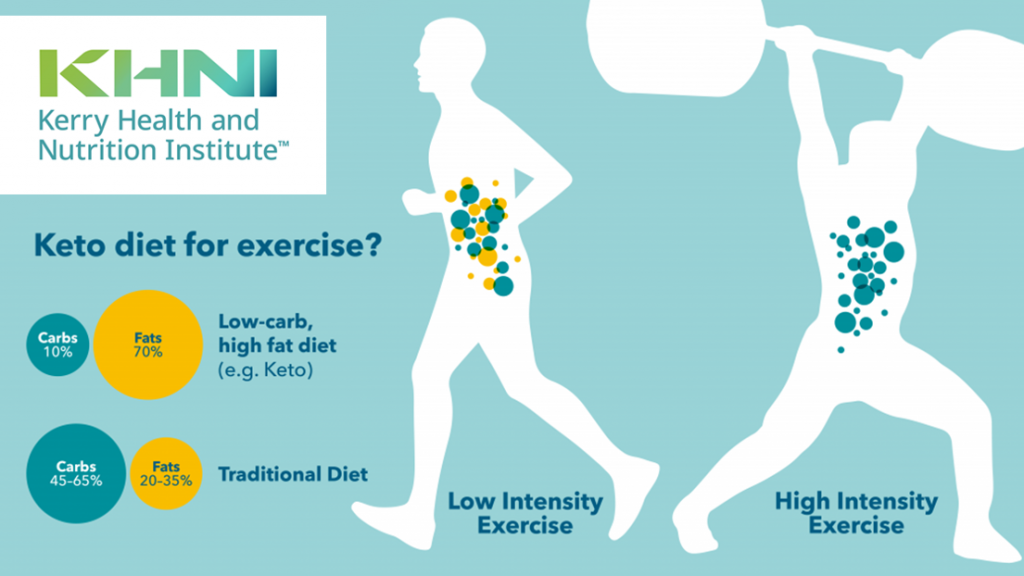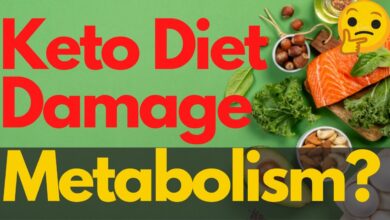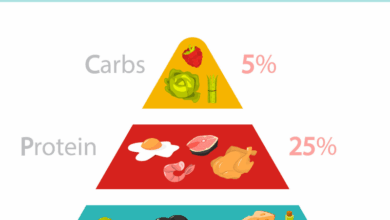
Is keto diet better even with exercise? This deep dive explores the fascinating interplay between the ketogenic diet and exercise, examining its potential benefits and drawbacks. We’ll unpack the science behind ketosis, analyze how exercise impacts weight management, and delve into the synergies and considerations of combining these two approaches. Understanding the nuances of this powerful combination is key to unlocking optimal results and long-term success.
The keto diet restricts carbohydrates, pushing the body into ketosis where it burns fat for fuel. Exercise, on the other hand, increases calorie expenditure and influences various metabolic processes. We’ll investigate how these two forces interact, focusing on how exercise can amplify the keto diet’s effectiveness in weight loss and overall well-being. Expect a comprehensive look at potential challenges, considerations for individual variations, and strategies for long-term sustainability.
Understanding the Ketogenic Diet
The ketogenic diet, often touted for its weight loss potential, has gained significant popularity. It’s a high-fat, moderate-protein, and very-low-carbohydrate eating plan. Understanding its principles, potential benefits, and drawbacks is crucial for anyone considering adopting this approach. This section will delve into the specifics of the ketogenic diet, exploring its mechanisms and implications.The ketogenic diet works by inducing a metabolic state called ketosis.
In this state, the body shifts from using glucose (derived from carbohydrates) as its primary energy source to using ketones, which are produced from the breakdown of fats. This metabolic shift can lead to weight loss, although the exact mechanisms are still being researched.
Principles of the Ketogenic Diet
The ketogenic diet centers on drastically reducing carbohydrate intake. This forces the body to utilize stored fat for energy, producing ketones. A typical ketogenic diet emphasizes consuming healthy fats, like avocados, nuts, and olive oil, while limiting carbohydrates from grains, fruits, and starchy vegetables. Protein intake is moderate to support muscle maintenance. This careful balance of macronutrients is key to achieving and maintaining ketosis.
Food Restrictions and Typical Meal Plans
The ketogenic diet significantly restricts carbohydrate intake. Foods high in carbohydrates, such as bread, pasta, rice, sugary drinks, and most fruits, are generally avoided. This can be challenging for some individuals accustomed to a higher carbohydrate intake. Typical meal plans often include substantial amounts of healthy fats, such as fatty fish, meats, and oils. Moderate protein sources, like lean meats, poultry, and eggs, are also included.
Examples of meal plans vary, but they often feature dishes like steak with avocado and salad, or chicken stir-fry with lots of vegetables (low-carb options).
Metabolic Processes During Ketosis
During ketosis, the body’s metabolic processes shift from using glucose to utilizing ketones as a primary energy source. The liver breaks down fatty acids into ketones. These ketones enter the bloodstream and are used by the brain and other tissues as fuel. This metabolic shift is a key factor in the potential for weight loss, as the body burns stored fat for energy instead of glucose.
Ketones serve as an alternative energy source for the body, especially the brain, when glucose is unavailable.
This process can have significant effects on appetite regulation and energy expenditure.
Common Potential Benefits and Drawbacks
The ketogenic diet may offer benefits such as weight loss, improved blood sugar control, and reduced seizures in some individuals. However, potential drawbacks include nutrient deficiencies if not carefully planned, digestive issues, and potential for kidney stones in susceptible individuals. The long-term effects of the ketogenic diet are still being investigated.
Role of Macronutrients
The ketogenic diet heavily emphasizes the consumption of fats. A high-fat intake is crucial for producing ketones, which the body uses as fuel. Protein intake is moderate, primarily to support muscle maintenance. Carbohydrate intake is severely restricted to induce ketosis. The balance between these macronutrients is essential for success on the ketogenic diet.
Keto Diet vs. Other Weight-Loss Diets
| Diet | Key Principles | Potential Benefits | Potential Drawbacks |
|---|---|---|---|
| Ketogenic Diet | High fat, moderate protein, very low carbohydrate | Potential weight loss, improved blood sugar control | Nutrient deficiencies, digestive issues, potential kidney stones |
| Mediterranean Diet | Focus on fruits, vegetables, whole grains, and healthy fats | Improved heart health, reduced risk of chronic diseases | May not be as effective for rapid weight loss |
| Paleo Diet | Focuses on foods our ancestors consumed | Potential for improved gut health | Can be restrictive and lack variety |
The table above provides a basic comparison. Choosing a diet should be personalized and based on individual needs and health conditions. Consulting a healthcare professional is highly recommended before starting any new diet.
The Role of Exercise in Weight Management
Exercise is a crucial component of any weight management strategy, and the ketogenic diet is no exception. While the keto diet focuses on dietary changes to achieve ketosis, exercise plays a vital role in optimizing results and overall health. It complements dietary adjustments by increasing calorie expenditure, building muscle, and boosting metabolic rate. This section will explore the dynamic interplay between exercise and the ketogenic diet.
The Relationship Between Exercise and Calorie Expenditure
Exercise directly impacts calorie expenditure. The more intense and prolonged the workout, the higher the calorie burn. This increase in energy expenditure helps to create a calorie deficit, which is essential for weight loss. The body utilizes different energy sources during exercise, with the specific mix depending on the type and intensity of the activity. This is particularly important for individuals following a ketogenic diet, as they rely on stored fats for fuel.
Different Types of Exercise and Their Impact on Fat Burning
Different types of exercise affect fat burning in varying degrees. Cardiovascular exercises, such as running, swimming, or cycling, are generally effective for burning calories and promoting fat oxidation. Resistance training, or weightlifting, builds muscle mass, which in turn boosts resting metabolic rate, increasing calorie burn even when at rest. High-intensity interval training (HIIT) combines short bursts of intense exercise with brief recovery periods, maximizing calorie burn and promoting fat loss.
Aerobic vs. Anaerobic Exercises in Relation to the Keto Diet
Aerobic exercises, like jogging or cycling, primarily utilize oxygen to produce energy. They are generally sustained activities that support fat burning, making them beneficial for individuals on a ketogenic diet. Anaerobic exercises, such as weightlifting or sprinting, involve short bursts of high-intensity activity that do not rely on oxygen for energy production. While anaerobic exercise contributes to muscle building, its impact on fat burning during the workout itself might be less pronounced than aerobic exercise.
However, the increased muscle mass gained from anaerobic exercise boosts overall metabolism, which aids in fat burning over time.
Importance of Exercise for Maintaining Overall Health and Well-being
Exercise is essential for maintaining optimal health and well-being beyond weight management. It strengthens the cardiovascular system, improves mood, reduces stress, and enhances sleep quality. Regular physical activity also helps to manage chronic diseases like type 2 diabetes and some forms of cancer. These positive effects on health are independent of the ketogenic diet but can enhance the effectiveness of any weight management plan.
Calorie Burn Rates for Different Types of Exercises
| Type of Exercise | Approximate Calorie Burn Rate (per hour) |
|---|---|
| Walking (moderate pace) | 200-300 |
| Running (moderate pace) | 400-600 |
| Cycling (moderate intensity) | 300-500 |
| Swimming (moderate intensity) | 400-600 |
| Weightlifting (moderate intensity) | 250-400 |
| HIIT (high intensity) | 500-800+ |
Note: Calorie burn rates are estimates and can vary based on individual factors such as weight, age, intensity level, and fitness level.
I’ve been pondering the keto diet lately, and whether it’s truly superior even when you’re hitting the gym regularly. While some swear by it, it’s definitely not a magic bullet. The surprising thing is, studies about the potential benefits of switching to e-cigarettes for those looking to improve their health are quite interesting. switching to e cigarettes can lengthen your life.
Ultimately, the best approach for a healthy lifestyle is likely a balanced one, combining exercise and a nutritious diet. A proper diet alongside a consistent exercise routine might be the more effective and sustainable strategy for long-term well-being, rather than focusing on one specific approach like keto.
Keto Diet and Exercise Synergies
The ketogenic diet, often lauded for its weight loss potential, can be even more effective when paired with a well-structured exercise regimen. This combination leverages the unique metabolic adaptations of both approaches to maximize fat burning and improve overall health markers. Understanding how exercise interacts with the keto diet unlocks a deeper level of metabolic optimization, potentially leading to faster and more sustainable results.The ketogenic diet, by its nature, encourages the body to use fat as its primary fuel source.
Exercise further amplifies this effect, creating a powerful synergy in weight management. This combined approach goes beyond simple calorie burning; it impacts ketone body production, utilization, and even appetite regulation, all factors crucial for long-term success on the keto journey.
Impact of Exercise on Ketone Body Production and Utilization
Exercise increases the demand for energy, which can prompt the body to further rely on fat stores for fuel. This increased demand can lead to a rise in the production of ketone bodies. The body efficiently utilizes these ketone bodies as an alternative energy source during exercise, sparing glucose and preventing depletion of glycogen stores. This process contributes to sustained energy levels and potentially enhances fat burning even after the workout.
Potential Benefits of Combining Keto Diet with Specific Types of Exercise
Combining the keto diet with specific types of exercise can offer targeted benefits. For instance, high-intensity interval training (HIIT) can significantly increase fat burning during and after workouts, which is particularly effective when paired with a keto diet. Resistance training, on the other hand, builds lean muscle mass. Maintaining or increasing lean muscle mass is crucial for metabolic rate and, when combined with a keto diet, can further enhance fat loss and overall body composition improvements.
Aerobic exercises, such as running or cycling, can further enhance the body’s ability to utilize ketones as fuel. This can contribute to increased endurance and improved cardiovascular health.
Impact of Exercise on Appetite Regulation During a Ketogenic Diet
Exercise plays a significant role in appetite regulation. Physical activity can help to stabilize blood sugar levels, reducing fluctuations that can lead to increased cravings. This is particularly beneficial on a ketogenic diet, where consistent blood sugar control is important for maintaining ketosis and avoiding unwanted cravings. Regular exercise can also help regulate the release of appetite-regulating hormones, contributing to overall satiety and reducing the desire for excessive food intake.
While the keto diet might seem like a magic bullet for weight loss, is it truly better, even with exercise? It really boils down to individual needs and consistency. Prioritizing a healthy sleep schedule, like getting sleep one hour earlier , can significantly impact your body’s ability to regulate hormones and metabolism, which in turn might influence how well the keto diet works for you.
Ultimately, a balanced approach, combining a healthy diet with regular exercise and sufficient rest, often leads to better results than relying solely on one dietary approach.
Impact of Exercise on Insulin Sensitivity During a Ketogenic Diet
Exercise improves insulin sensitivity, which is a key benefit when following a ketogenic diet. Insulin sensitivity refers to the body’s ability to utilize insulin effectively to regulate blood sugar. Improved insulin sensitivity can help maintain stable blood sugar levels, which is essential for maintaining ketosis. Physical activity can increase the number of insulin receptors on cells, allowing for a more efficient uptake of glucose and reducing the need for insulin spikes.
This can lead to better blood sugar control and overall metabolic health.
Keto Diet and Exercise Considerations

The ketogenic diet, when combined with exercise, can be an effective approach to weight management and improved health. However, careful consideration of potential challenges, risks, and nutritional needs is crucial for safe and successful implementation. Combining intense exercise with the keto diet requires a nuanced understanding of how your body responds to both. This section delves into the potential pitfalls and strategies to mitigate them, ensuring a balanced and sustainable approach.Understanding the specific considerations associated with combining keto and exercise is paramount.
This involves recognizing potential challenges like nutrient deficiencies, electrolyte imbalances, and the impact of intense workouts on your body’s ability to maintain ketosis. Careful planning and awareness are key to avoiding setbacks and maximizing the benefits of this approach.
While the keto diet might seem like a great way to support fitness goals, is it really better, even with exercise? It depends. Focusing on a healthy diet overall, including cutting out processed foods like those in fast food, could significantly improve your overall health, including fertility. For example, check out this article on boost your fertility give up fast food for some insights.
Ultimately, a balanced approach combining a healthy diet with regular exercise is likely the most effective way to achieve your fitness goals, whatever they may be.
Potential Challenges in Combining Keto with Exercise
Combining the ketogenic diet with intense exercise can present several challenges. Maintaining adequate energy levels during workouts can be tricky, as the body adapts to burning fat for fuel instead of glucose. This shift can lead to fatigue, reduced performance, and even feelings of lightheadedness, especially in the early stages of the diet. Proper planning, including strategically timed meals and snacks, is vital for optimal energy levels during workouts.
Potential Risks and Side Effects
The ketogenic diet, while often beneficial, can have potential side effects, especially when combined with intense exercise. One common side effect is keto-flu, characterized by headaches, fatigue, nausea, and irritability. These symptoms are typically temporary and resolve as your body adapts to the diet. However, intense exercise during keto-flu can exacerbate these symptoms. Another potential risk is dehydration, which is more pronounced during intense physical activity.
Electrolyte imbalances, particularly a deficiency in sodium, potassium, and magnesium, are also a concern, especially during extended or high-intensity workouts.
Nutrient Deficiencies and Mitigation Strategies
The ketogenic diet can potentially lead to nutrient deficiencies if not carefully managed. Essential nutrients like fiber, vitamins (particularly B vitamins), and minerals (such as magnesium and calcium) may be reduced in your diet. Addressing these deficiencies requires a focus on whole, nutrient-dense foods, and potentially supplementation under medical supervision. The key is to ensure a balanced intake of nutrients that are not restricted on the keto diet.
Examples include incorporating vegetables, fruits (in moderation), and healthy fats. If supplementation is required, consulting a healthcare professional is crucial to determine the appropriate dosage and to avoid any potential adverse interactions.
Importance of Hydration and Electrolyte Balance
Proper hydration and electrolyte balance are paramount when exercising on a ketogenic diet. Intense exercise leads to significant fluid loss, which can be exacerbated by the reduced carbohydrate intake on keto. This increased risk of dehydration can lead to fatigue, muscle cramps, and even more severe complications. Consuming plenty of water and electrolyte-rich beverages before, during, and after exercise is essential.
Electrolyte supplements or drinks containing sodium, potassium, and magnesium can be helpful, but consulting with a doctor or registered dietitian is recommended.
Common Keto Diet-Related Side Effects and Mitigation Strategies
| Side Effect | Mitigation Strategy |
|---|---|
| Keto-flu (headaches, fatigue, nausea) | Gradually adjust to the diet, ensuring adequate hydration and electrolytes. Consume small, frequent meals. |
| Dehydration | Drink plenty of water throughout the day, especially before, during, and after exercise. Consume electrolyte-rich beverages. |
| Electrolyte imbalances | Consume electrolyte-rich foods and beverages. Consider electrolyte supplements, but only under medical supervision. |
| Nutrient deficiencies | Prioritize whole, nutrient-dense foods. Consider supplementation, but only under medical supervision. |
| Reduced performance | Strategically time meals and snacks around workouts to maintain energy levels. Ensure adequate hydration and electrolyte balance. |
Comparing Keto Diet and Exercise Outcomes: Is Keto Diet Better Even With Exercise
The ketogenic diet, when combined with exercise, can produce significant changes in body composition and weight. However, the specific outcomes depend on several factors, including the type and intensity of exercise, the individual’s adherence to the keto diet, and their baseline fitness level. Understanding these variables is crucial for tailoring an effective approach.Combining the keto diet with exercise often leads to enhanced weight loss and improved body composition compared to a keto diet alone.
This synergy arises from the combined effects of reduced calorie intake, increased energy expenditure through exercise, and the body’s ability to utilize fat stores more efficiently.
Weight Loss and Body Composition Changes
The ketogenic diet, when coupled with exercise, typically results in greater weight loss and more favorable body composition changes compared to the keto diet alone. This heightened effectiveness stems from a combination of factors: increased calorie expenditure during workouts, enhanced fat metabolism facilitated by the ketogenic diet, and the promotion of lean muscle mass development through exercise. Weight loss outcomes can vary depending on individual factors, such as daily caloric intake, exercise intensity, and duration.
Impact of Exercise Intensity
The intensity of exercise plays a significant role in how effectively the keto diet supports weight loss and body composition changes. Moderate-intensity exercise, such as brisk walking or cycling, can help burn calories and enhance fat oxidation, potentially complementing the keto diet’s effects. High-intensity interval training (HIIT), while demanding, can lead to greater calorie burn and potentially accelerate fat loss, particularly when combined with the keto diet.
Lower-intensity workouts may still offer benefits, but the combined effect with the ketogenic diet may be less pronounced compared to higher intensities. For instance, a marathon runner might experience a more significant impact from their high-intensity training regime in conjunction with the ketogenic diet than someone doing a leisurely walk.
Performance Outcomes During Exercise
The keto diet’s effect on exercise performance is a subject of ongoing research. Some studies suggest that a ketogenic diet may improve endurance performance, potentially by providing a more efficient fuel source for sustained exercise. Others suggest that the diet might not enhance performance in all exercise types. The individual response to the keto diet during exercise varies.
For example, some athletes may experience improvements in endurance performance, while others might not see significant differences.
Impact of Exercise Duration and Intensity on Weight Loss
| Exercise Duration (minutes) | Exercise Intensity (Moderate/High) | Potential Weight Loss Impact (Keto Diet) |
|---|---|---|
| 30 | Moderate | Moderate |
| 60 | Moderate | Significant |
| 30 | High | Significant |
| 90 | High | Very Significant |
| 60 | Moderate/High | Very Significant |
This table illustrates a potential correlation between exercise duration and intensity, and the corresponding impact on weight loss with a ketogenic diet. The exact impact, however, can vary considerably based on individual factors like diet adherence, metabolic rate, and baseline fitness levels. It’s essential to note that these are potential impacts, and individual results may differ.
Individual Variations and Considerations

The ketogenic diet, combined with exercise, can be a powerful tool for weight management and overall health. However, its effectiveness isn’t uniform across all individuals. Factors like age, gender, existing health conditions, and individual metabolic responses play a significant role in how well a person adapts to this lifestyle. This section delves into these individual variations, offering insights on tailoring a ketogenic diet and exercise routine to specific needs.
Age-Related Considerations
Age significantly impacts metabolic rate and muscle mass. Younger individuals often have higher metabolic rates, allowing them to potentially tolerate the ketogenic diet and exercise more intensely. Conversely, older adults may experience a slower metabolic rate, necessitating adjustments to calorie intake and exercise intensity to avoid potential risks. For example, an older adult might need to reduce the intensity of high-impact exercises and prioritize strength training to maintain muscle mass and bone density.
Gender-Specific Needs
Men and women often have different hormonal profiles and body compositions, which can influence their responses to the ketogenic diet and exercise. Women may experience hormonal fluctuations that affect their metabolism and energy levels. Adjusting macronutrient ratios and potentially incorporating supplements under medical guidance may be necessary. For example, women may require more iron and other micronutrients during this phase.
Health Conditions and Medications
Certain health conditions can interact with the ketogenic diet and exercise. Individuals with diabetes, kidney disease, or liver conditions must exercise caution and consult their healthcare providers before implementing a ketogenic diet. The specific needs and limitations of these conditions need careful consideration and adjustments to the diet and exercise regimen. For instance, individuals with diabetes may need to monitor blood sugar levels more closely when exercising on a ketogenic diet.
Pre-existing conditions require careful consideration and modifications.
Importance of Professional Guidance
Consulting a healthcare professional is crucial before starting a ketogenic diet, especially when combined with exercise. A doctor can assess individual health status, identify potential risks, and tailor a safe and effective plan. They can also monitor progress and make necessary adjustments to the diet and exercise routine. Medical supervision is essential to ensure the diet is suitable for the individual’s specific needs and circumstances.
Monitoring Progress and Adjustments
Monitoring progress is essential to ensure the ketogenic diet and exercise plan remains effective and safe. Regular check-ups, including blood tests, are recommended to monitor vital signs, kidney function, and electrolyte levels. Adjustments to the diet and exercise plan may be necessary based on individual responses and progress. For instance, if weight loss isn’t occurring as expected, a healthcare professional can help identify and address any underlying issues.
Table Summarizing Factors Influencing Keto Diet and Exercise Success
| Factor | Potential Influence on Keto Diet and Exercise Success | Considerations |
|---|---|---|
| Age | Metabolic rate and muscle mass can vary, impacting tolerance and intensity. | Adjust calorie intake and exercise intensity based on age. |
| Gender | Hormonal differences and body composition can affect metabolic responses. | Tailor macronutrient ratios and consider supplements under medical guidance. |
| Health Conditions | Certain conditions may interact with the diet and exercise, requiring caution and adjustments. | Consult healthcare professionals for personalized guidance and monitoring. |
| Medications | Certain medications may interact with the keto diet, requiring adjustments. | Consult a doctor to identify potential interactions and adapt the plan accordingly. |
| Individual Metabolic Response | Individual bodies respond differently to the ketogenic diet. | Regular monitoring of progress and adjustments to the plan are essential. |
Long-Term Sustainability
Embarking on a ketogenic diet and exercise routine requires more than just initial motivation; it demands a sustainable strategy for long-term adherence. This journey involves understanding the psychological factors that influence commitment and developing practical tools to maintain the lifestyle changes. A sustainable approach considers individual preferences and creates a system that feels integrated into daily life rather than a restrictive regimen.A sustainable approach to the ketogenic diet and exercise regimen is crucial for long-term success.
Simply put, it’s about creating a lifestyle that’s manageable and enjoyable, not a temporary fix. This means building healthy habits that can be carried out consistently over time, rather than intense, unsustainable efforts.
Strategies for Maintaining a Ketogenic Diet Long-Term
Establishing a sustainable ketogenic lifestyle hinges on strategic planning. This includes incorporating keto-friendly foods into existing meal patterns, creating a variety of recipes, and finding a balance between restrictions and enjoyment. A consistent approach that aligns with personal preferences is key to long-term success. Consider a gradual approach, starting with small changes and building up to a fully ketogenic lifestyle.
Importance of Finding a Sustainable Approach
A sustainable approach to the keto diet and exercise considers individual lifestyle preferences. It’s not about rigid adherence to strict rules, but rather about finding an approach that seamlessly integrates into your routine and doesn’t feel like a chore. This adaptability fosters consistency and prevents feelings of deprivation or overwhelm, which are common barriers to long-term adherence. Tailoring the approach to individual needs and preferences is essential for maintaining commitment over time.
Psychological Factors Related to Long-Term Adherence, Is keto diet better even with exercise
Psychological factors play a significant role in long-term adherence to a ketogenic diet and exercise routine. Maintaining motivation and consistency requires addressing potential challenges like boredom with repetitive meals, emotional eating triggers, or feelings of isolation. Regular self-reflection and a positive mindset are vital to navigate these psychological hurdles. Support from friends, family, or a community of like-minded individuals can also boost motivation and provide encouragement during challenging times.
Role of Support Systems in Maintaining Motivation and Consistency
Support systems are crucial for sustaining motivation and consistency. Sharing experiences, advice, and encouragement with others who are on a similar journey can foster a sense of community and accountability. Consider joining online forums, support groups, or finding a personal trainer or coach to provide guidance and support. A supportive environment can provide valuable feedback and encouragement to navigate the challenges that arise during the long-term commitment.
Sample Weekly Meal Plan and Exercise Schedule for a Long-Term Ketogenic Lifestyle
A sample weekly meal plan and exercise schedule provides a framework for a long-term ketogenic lifestyle. Remember to adjust these suggestions to fit your individual needs and preferences. This plan is designed to be sustainable and can be adapted as circumstances change.
| Day | Breakfast | Lunch | Dinner | Exercise |
|---|---|---|---|---|
| Monday | Scrambled eggs with spinach and cheese | Salad with grilled chicken and avocado | Baked salmon with asparagus and cauliflower rice | 30-minute cardio workout |
| Tuesday | Keto smoothie with protein powder, berries, and almond milk | Leftover salmon and asparagus | Ground beef stir-fry with broccoli and zucchini | Weight training (focus on upper body) |
| Wednesday | Keto pancakes with berries and whipped cream | Tuna salad with celery and cucumber | Chicken and vegetable skewers | Yoga or Pilates |
| Thursday | Greek yogurt with berries and nuts | Leftover chicken and vegetable skewers | Steak with broccoli and cauliflower mash | 30-minute cardio workout |
| Friday | Keto waffles with almond butter and berries | Salad with grilled shrimp and avocado | Shrimp scampi with zucchini noodles | Weight training (focus on lower body) |
| Saturday | Keto French toast with berries and whipped cream | Leftover shrimp scampi | Homemade pizza with keto crust and vegetables | Hiking or biking |
| Sunday | Omelette with cheese and vegetables | Leftover pizza | Chicken and vegetable stew | Rest or light stretching |
Ending Remarks
In conclusion, the combination of keto and exercise can be a powerful tool for weight management and overall health. However, it’s crucial to understand the complexities involved and to approach it thoughtfully. By considering individual needs, potential challenges, and the importance of proper guidance, you can maximize the benefits of this combination. Remember, consistent effort and a balanced approach are vital for long-term success.
This exploration has hopefully equipped you with the knowledge to make informed decisions about your fitness journey.





